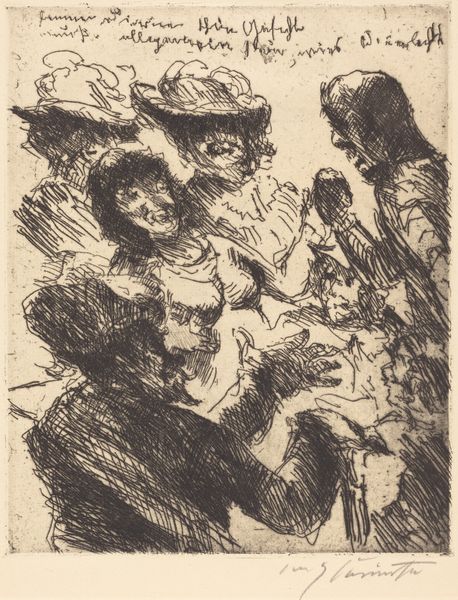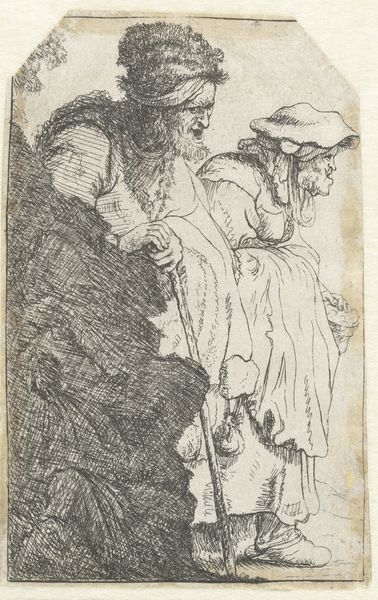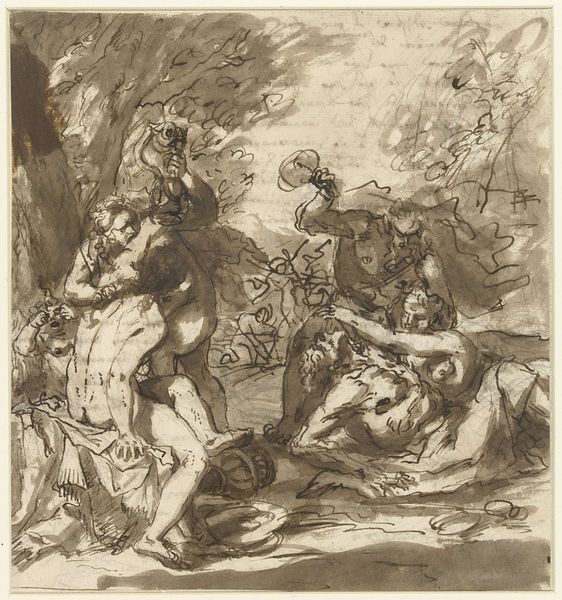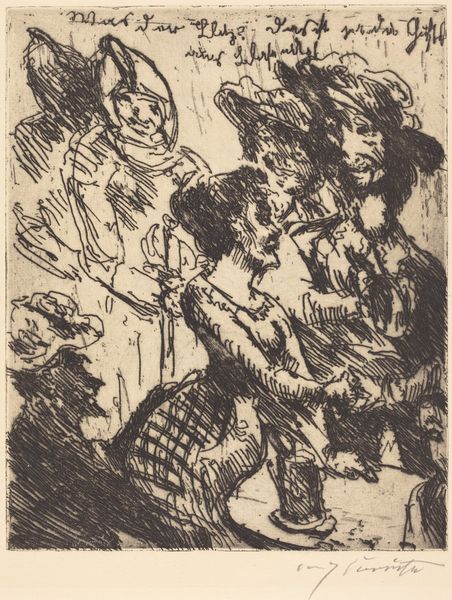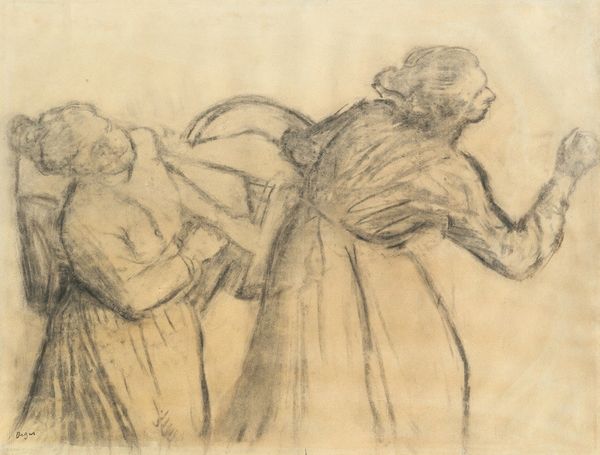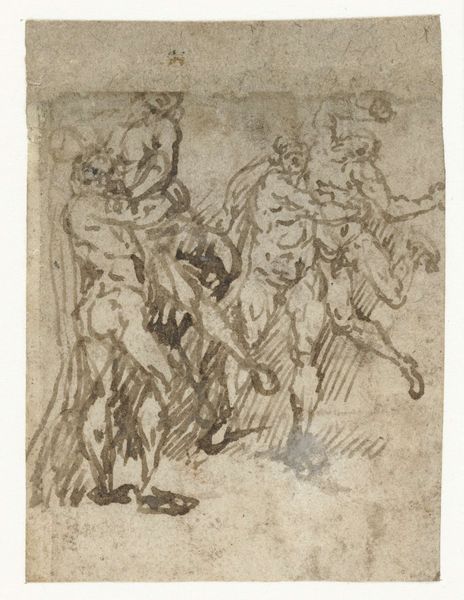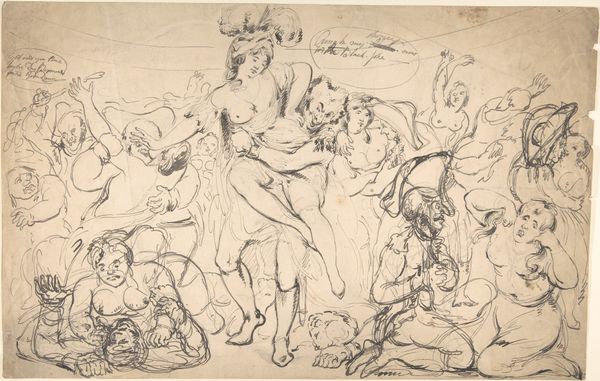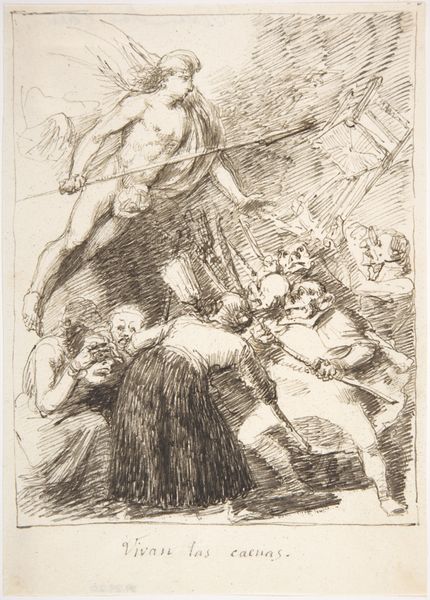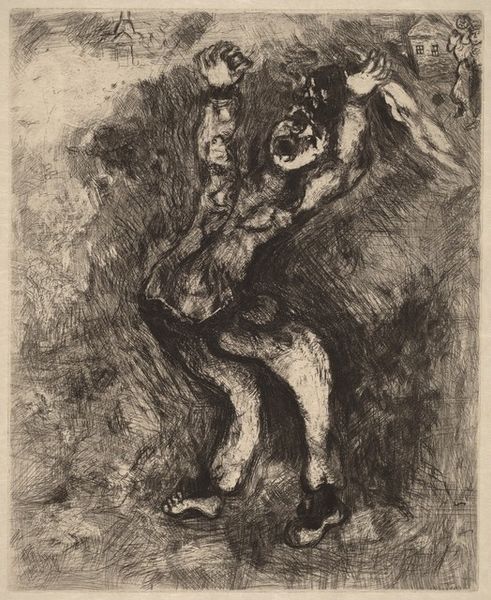
drawing, ink
#
portrait
#
drawing
#
ink drawing
#
pen sketch
#
figuration
#
ink
#
expressionism
Copyright: Public Domain: Artvee
Editor: This is "Cavaliers with a Woman," likely from 1923, by Lovis Corinth. It’s an ink drawing, and the sketchy lines give it a very restless feel. What can you tell me about it? Curator: It’s fascinating how Corinth, known for his Expressionist paintings, utilizes the immediacy of ink to capture a fleeting moment. Look at the weight of the line, the way it varies from delicate hatching to almost violent scribbles. Editor: Yes, the quick, scratchy lines make it feel almost unfinished. Is that intentional, do you think? Curator: Perhaps, but I’m more interested in what that seemingly unfinished quality *does*. It exposes the *process* of making the artwork, laying bare the artist’s labor. Corinth isn’t hiding anything; he’s showing us the very mechanics of representation. Editor: That’s a good point. It’s not just an image; it’s a record of his actions, of his hand moving across the paper. How does this tie into the broader social context? Curator: Well, consider the art market of the time. Was this intended for sale? For study? Was ink readily available? The *materiality* of the piece – the specific type of ink, the paper it’s on – offers insights into the conditions of its production and reception. Editor: So by focusing on the materials and process, we can understand more about the social circumstances surrounding the artwork? Curator: Precisely. We move beyond simply appreciating its aesthetic value and start interrogating its very existence. Where and how this image was produced, distributed and finally consumed helps unveil broader market systems and dynamics. Editor: That shifts my perspective completely. Thanks for pointing that out. Curator: It reveals that even a seemingly simple ink drawing has hidden dimensions of meaning linked to materiality.
Comments
No comments
Be the first to comment and join the conversation on the ultimate creative platform.
